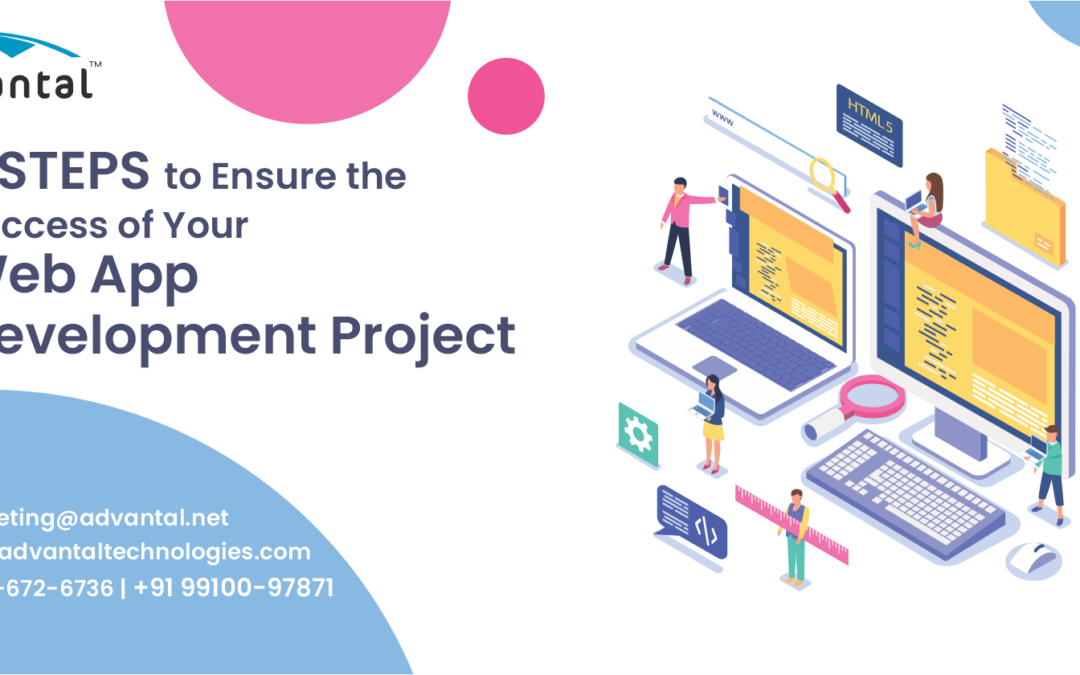Web app development is a process in which developers build software that they host on remote servers. The end-user can access them through the Internet. Web apps, unlike mobile applications, can be accessed using browsers such as Safari, Chrome, and Edge without the need to download them.
Like any software development project, web application development requires a skilled team and well-defined processes to accomplish. I have listed out seven critical steps in the development of web applications that the best software development companies follow:
1. Clearly Define the Problem of Your Web Solution
Startups frequently come up with innovative ideas, but have they identified and clearly defined the challenges and market needs?
A problem that is not understood thoroughly cannot be solved efficiently. It is vital to define the problem you want your envisioned web app or other software product to solve. Draw out the reason why the user needs your web-based solution in the first place. That is the starting point of the whole process. And a good start is half done.
2. Plan Meticulously and Create a Workflow
While planning is not usually the most exciting aspect of the process, it does make all subsequent execution much more focused and enjoyable. As you have clearly defined your problem, now it is time to plan a workflow to achieve the goals.
A workflow can help you organise the many parts of your application development methodically. Consider what your web app will include and how you will satisfy those needs with your current resources and budget. Because you are working on software, your workflow should be both business and technical.
You might need to make the necessary adjustments in the deadlines in which you want the web developers to complete the application. Because advanced application development processes will require you to implement modifications as your user base grows and provides feedback. It brings us to the next step in the web app development process.
3. Develop a Prototype of Your Web Application
A prototype is an incomplete but working web app that will help you see and feel the realities of your vision. One cost-effective way is to start with a minimum viable product (MVP). From there, get feedback from users to know what features and functionalities they want and need in the application.
4. Gather User Insights
When you serve your customers with an MVP, make sure that you do not just ask them what they want but map out their journey as a user in the app. Figure their challenges, the steps and the time they take to do a task on your web-based application. It will give you invaluable information to convert your solution from usable to delightful for the users.
5. Start to Build the Application
You have now collected feedback and user information to figure out what you exactly want in your application. You may also be able to determine the scalability and other requirements of your web solution. So the next step should be to do some research on the tools and technologies you will need to develop your web-based app.
Knowing the best technology stack for web application development will also help you determine which software development company will be the best fit for your project, based on the technologies on which they work.
6. Quality Assurance through Web App Testing
That’s a no-brainer that you should not release any software or update without first testing it. The most accomplished software product engineering and development firms understand the need to continually test their applications through various modules throughout the software development life cycle. After all, nobody likes bugs in their application, and your users certainly don’t.
In other words, incorporating Quality Assurance & Testing is a step that cannot be missed in a web solution creation process. It’s better to discover a bad customer experience possible by the QA team before the actual end-user.
7. Hosting of Web Applications
There is no critical difference between hosting a website and a web application. For your web app, you will need to get a domain name and a hosting platform (like AWS) before launching your web app.
The web hosting platform offers web servers where they keep your application files. They also supply the tools and services required by your users to view the web application through the Internet.
Final Words
At Advantal Technologies, we leverage the latest web frameworks to create scalable and flexible web apps. We have a coveted team of seasoned professionals with expertise in bleeding-edge web technologies, making us the ideal choice for an offshore web application development company.

